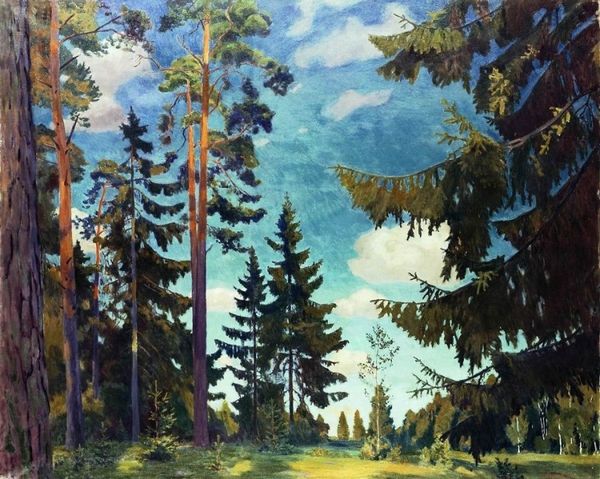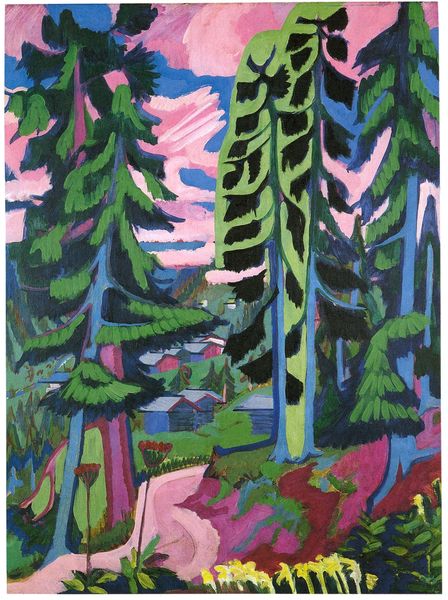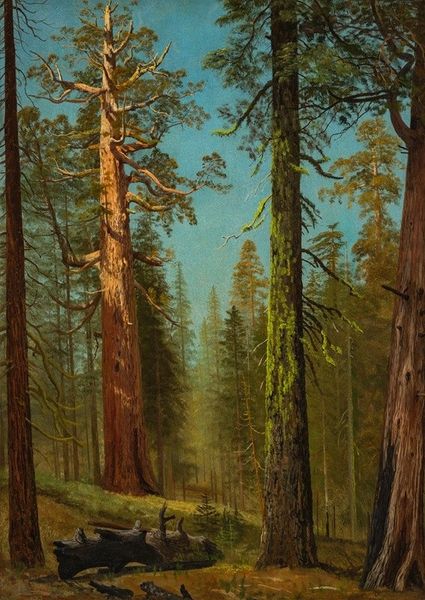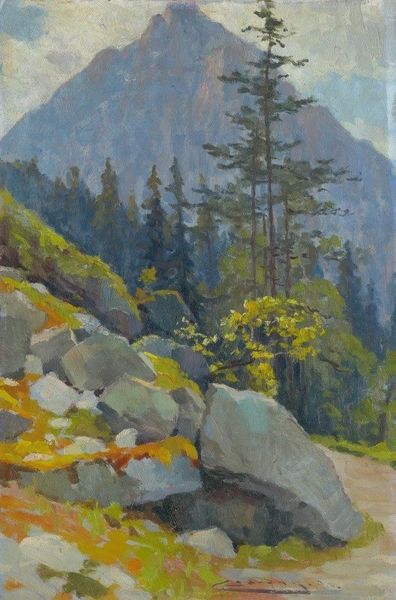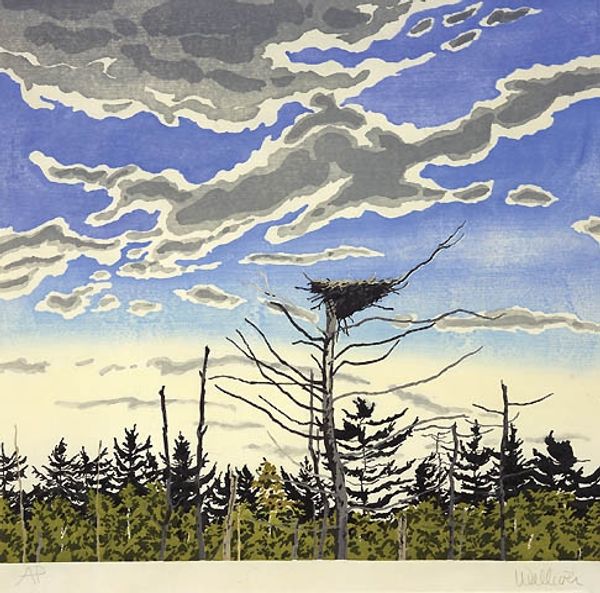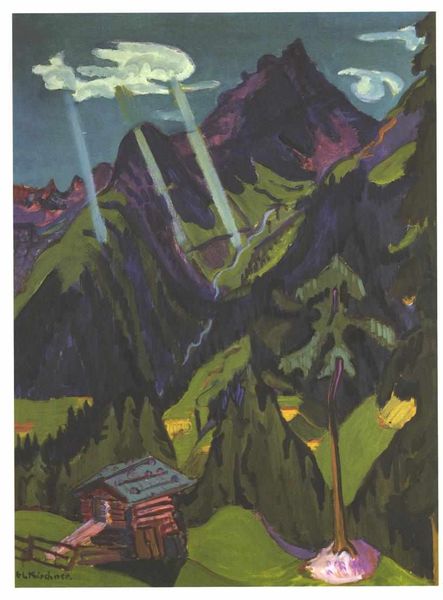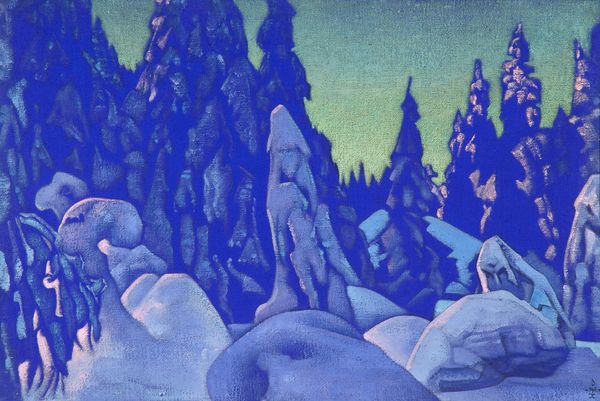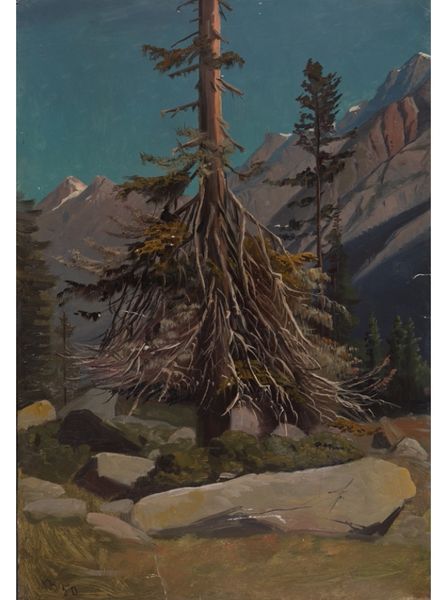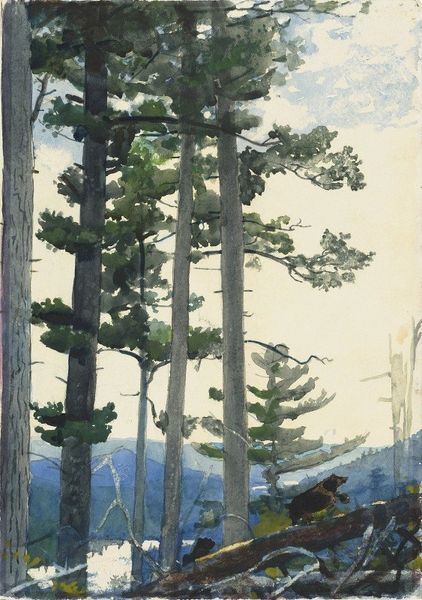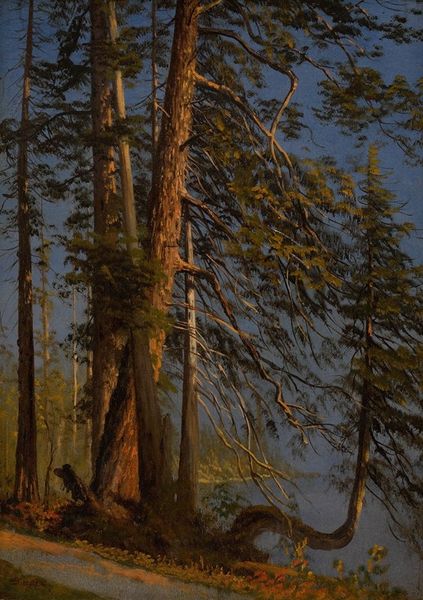
Dimensions: 50 x 33.5 cm
Copyright: Public domain
Curator: This is “Zakat” by Ivan Bilibin, a watercolor illustration from 1926. Look at the contrast between light and shadow! What do you make of it? Editor: A somber beauty. The strong silhouettes of the dark trees against the golden sunset… it feels like the end of a fairy tale. Or perhaps the beginning of a dark one. Curator: That’s interesting, because Bilibin was known for illustrating fairy tales. What strikes me is how the stylization borrows from traditional Russian art and even Japanese prints, creating depth through layering rather than perspective. His work really fed into the rising interest in national identity. Editor: Precisely! The stylized forest becomes more than just a setting. It speaks to a primal connection with the land, something deep in the Russian psyche. And that setting sun! Is it simply a sunset or something being sacrificed? What is the symbolic value of sunset in Russian cultural imaginary at the turn of the century? Curator: Good questions. Bilibin painted this after emigrating from Russia. He was, as you alluded to, steeped in national mythologies. Do you see him attempting to recreate or reclaim a homeland he left behind? Was he even consciously thinking about Russian artistic nationalism while producing it in Cairo? Editor: I think it’s subconscious but utterly intrinsic. This wasn’t just illustrating tales; this was crafting an identity through iconic visual codes. That orange sun, partially hidden—like a fading ember, almost mythological in its appearance! Even the muted colors evoke the melancholy and nostalgia common in emigration narratives. Curator: Fascinating point, about its role in articulating and solidifying identity through visual culture. Especially poignant considering the work emerged in exile! Editor: Looking closer, that birch log in the foreground—is it also a reference to the classic Russian landscape? To some deep yearning or desire? I wonder. Curator: These stylized symbols really demonstrate the power of visual language in reflecting identity. It makes me consider what this painting's role might have been in shaping the West's idea of Russia through illustration and printed matter. Editor: Indeed! It makes you ponder the ongoing resonance of certain images and how artists use imagery to preserve and adapt culture over generations. Curator: An echo through time, captured in watercolor. Editor: Beautiful, evocative, and ultimately very sad. A fascinating snapshot, both artistically and historically.
Comments
No comments
Be the first to comment and join the conversation on the ultimate creative platform.
